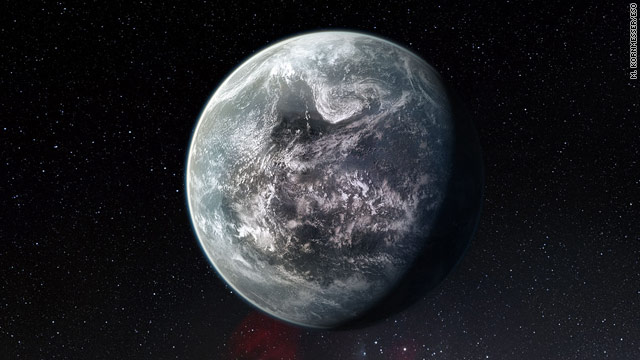

The HARPS instrument has identified an Earth-like planet, shown in this artist's impression, orbiting star HD 85512 in the southern constellation of Vela.
16 'super-Earths' found outside solar system
It's not like aliens put up a welcome banner or anything, but scientists now have newly identified at least one planet that could potentially sustain life.
The European Southern Observatory has just announced the discovery of more than 50 new exoplanets (planets outside our solar system), including 16 super-Earths (planets whose mass is between one and 10 times that of our own planet).One of these planets in particular could theoretically be home to life if conditions are right. It's called HD 85512 b, and scientists say it's about 3.6 times the mass of the Earth. This planet is about 35 light years from Earth. Its location with respect to its star suggests that this planet could have liquid water under certain circumstances.
Don't get too excited, though; there's a lot more work to be done to explore whether this planet is truly fit for life, in addition to whether there are alien life forms there.
The discovery comes from High Accuracy Radial Velocity Planet Searcher, or HARPS. HARPS is located at the La Silla Observatory in Chile, and is part of a telescope that's nearly 12 feet long.
Here's how it works, according to ESO: When a planet orbits a star, the star move toward and away from the person who's stargazing on Earth in a regular fashion. That's called a change in radial velocity. Because of the Doppler effect, changes in radial velocity make the star's light spectrum move toward longer wavelengths when it's moving away, and toward shorter wavelengths as it gets closer. HARPS can detect this shift in the spectrum, and infer that there is a planet present.
So far, scientists have confirmed the existence of 564 planets outside of our solar system, according to NASA's PlanetQuest website, not counting this latest batch of more than 50. Beyond that, NASA's Kepler mission has found more than 1,200 exoplanet candidates.
"In the coming 10 to 20 years we should have the first list of potentially habitable planets in the Sun's neighbourhood. Making such a list is essential before future experiments can search for possible spectroscopic signatures of life in the exoplanet atmospheres," said Michel Mayor, who led the HARPS team, in a statement.


No comments:
Post a Comment